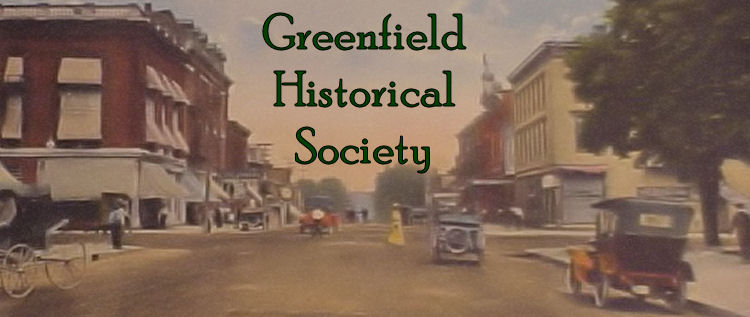
 |
|
|
|
The Abolitionist Movement in GreenfieldBetween the years of 1820 - 1850, Greenfield was an active part of the Underground Railroad because of its location on a line between Ripley, Ohio (on the Ohio River) and Columbus, Ohio. A great number of escaping slaves crossed the Ohio River at Ripley, where John Rankin and his family helped many on their way to freedom. These slaves traveled northward through Columbus and on to Lake Erie and then to freedom in Canada. Greenfield was also active in this movement due to its large population of Presbyterians. The Presbyterians held strong anti-slavery beliefs. Religious leaders, such as Rev. Samuel Crothers in Greenfield and Rev. James Dickey and Rev. Hugh Fullerton in South Salem, not only led their congregations from the pulpit, but also with their many writings and leadership in the formation of the abolitionist societies in the area. Underground Railroad RoutesGreenfield was an important stop on the route that ran from Ripley through Hillsboro and Bloomingburg to Columbus. At Greenfield, the freight could be shipped directly to Bloomingburg or through South Salem and Frankfort. The route taken was determined by where the slave catchers were active. In the Rocky Springs area, located south of Greenfield were Colonel Thomas Rodgers, Samuel Strain, Squire William Wilson and James Douglass. They shipped through Greenfield to Adam Wilson, west of Greenfield, or to South Salem. Adam Wilson could ship east into Greenfield or north to the David Bonner farm and on to Ebenezer McElroy, Alexander Beatty, Robert Templeton or Hugh Ghormley. From these places the freight was sent to Bloomingburg, South Salem or Frankfort. Abolition SocietiesThe Abolition Society of Paint Valley was formed during a meeting held in Greenfield on April 24, 1830. This society covered the area, including Fayette, Highland, and Ross counties with most meetings being held in Greenfield. Many members of the Paint Valley group became active in the newly formed Ohio Abolition Society in 1835. In 1836, the Ohio society listed the Paint Valley group as the largest in Ohio with 946 members. On August 6, 1836, the Abolition Society of Paint Valley disbanded. Immediately, the Greenfield Anti-Slavery Society was formed. The new Greenfield society published several pamphlets against slavery; many were written by Rev. Crothers. The Greenfield Group continued its meetings until August 27, 1845, when the last entry in the record book stated that the members would continue their work. Eliza HarrisThere are many stories about Eliza of Uncle Tom's Cabin and whether Harriet Beecher Stowe took a real story to write in her book. The story goes that Eliza Harris and her husband, George, escaped across the Ohio River in December 1837 and made their way to Greenfield. There, they stayed in a barn behind Dr. Milton Dunlap's house located at the northeast corner of Jefferson and Washington. George was ill, so they stayed until he recuperated. In late winter, Eliza returned to Kentucky to bring her baby to freedom. This is the well-known story of crossing the ice on the river. There are conflicting stories about the trip; some say she was reunited with George in Greenfield and they were taken to Canada together. Others say she was transported from Ripley to Indiana and then to Canada, where she met George. Frederick DouglassFrederick Augustus Washington Bailey, a slave born in Maryland, escaped to freedom in Massachusetts, where he changed his name to Frederick Douglass. There he became known as a strong anti-slavery speaker and was invited on the American Anti Slavery Society's Hundred Convention speaking tour through the Midwest. While in Indiana on the tour in 1844, he was attacked by a mob and his hand was broken. On his return through Ohio, he stopped in Greenfield and stayed with Dr. Milton Dunlap whose home sat on the northeast corner of Washington and Jefferson. In 1854, Dunlap built the beautiful house that still stands on the northeast corner of South Washington and Pine Streets. While in Greenfield, Douglass addressed several churches on the slavery issue. Greenfield residents were so impressed with him that they gave him a riding horse and saddle as a parting gift. Frederick Douglass went on to become a very influential advocate of the abolition of slavery in the United States. Augustus West SettlementMore information about the Augustus West Settlement can be found here. AME Shorter ChapelMore information about the A.M.E. Shorter Chapel can be found here. Avalon - Col. Jacob Hyer - H. L. DickeyMore information can be found here. More information and Underground Railroad sites can be found in the Paint Creek Freedom Trail Brochure. Just click on the image below. 
|
|
 |

|